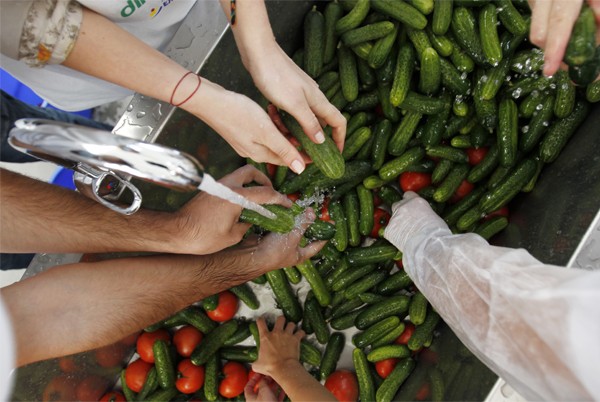A Chinese-led research team has determined the genes that make some cucumbers bitter, according to a report by the Global Times.
In a study published in U.S. journal "Science," the scientists said that some modern cucumbers became rid of their bitter tastes when Indians, who first used them as laxatives, domesticated them to make them more palatable.
"Wild cucumbers have been used as a purgative in India and because their fruits are as bitter as wormwood they are not sold on the market. No one wants to eat wild cucumbers," said the team's head Huan Sanwen of the Chinese Academy of Agricultural Sciences.
The researchers found nine genes that produce cucurbitacins, which are responsible for the bitter taste in cucumbers, as well as two other genes that serve as enablers for the nine genes.
Huang said that these genes make farm-grown cucumbers become bitter when the fruits are exposed to stress conditions such an water insufficiency and temperatures that are too hot or too cold.
The scientists conducted biochemical and genomic evaluation of 115 different cucumber lines to simulate the biosynthetic pathway taken when cucumbers are domesticated.
After the experiment, the researchers identified, along with the nine genes, the two "master switch genes"; one is called "Bl" that causes bitterness in leaves; the other is called "Bt" that causes bitterness in the fruit.
The study also revealed that when mutated, the Bt gene can make cucumbers resist becoming bitter under stress conditions.
Cited by previous studies to have anticancer properties, cucurbitacin was synthesized in the new study in a way that can help further the research on its strength as an anticancer agent, according to Huang.
"The new knowledge on cucurbitacin biosynthesis laid a solid foundation for biological manufacturing and engineering of the compounds as antitumor drugs," he said.
The research team is composed of staff from Hunan Agricultural University, Nanjing Agricultural Universtiy, Hunan Academy of Agricultural Sciences and the Chinese Academcy of Sciences, along with university researchers from the U.S., the Netherlands and Japan.






















